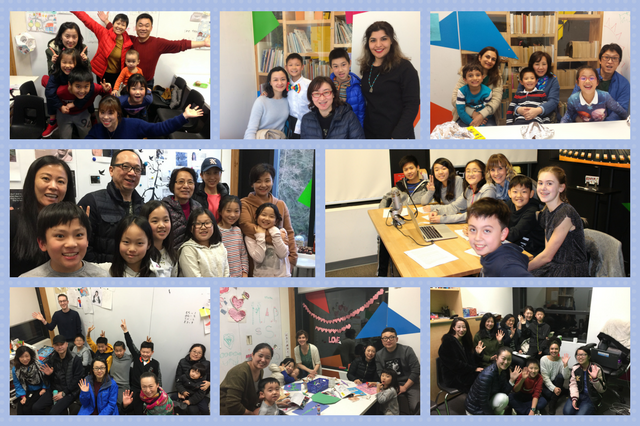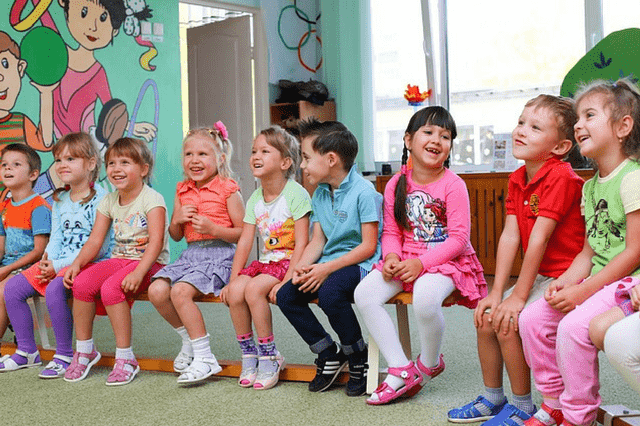The school bustles with excitement. Kids are busily writing notecards out, testing the overhead projector, reciting their pronunciation of long words, and setting out tea and chocolates on the classroom table. “Two minutes till your parents arrive!” the teacher says. Instead of the usual, “No, there’s not enough time! Teacher, more time!”, the students say ok, look at each other and smile nervously. Meanwhile, parents are shyly congregating steps away from the classroom door, waiting for the go-ahead to enter the small classroom, to witness their children’s first time presenting a well-researched topic to the class, in English.
If you were to visit Little Mountain on an in-class visit day, you could poke your head into one of the small, brightly-lit classrooms and witness something completely different.
At the primary levels, students make presentations about gratitude and designed cupcakes for their parents. The middle levels design and shared storm-chasing vehicles, gameshows, and wacky inventions. At the highest levels, students present slam poetry, literary responses, persuasive essays and narratives. Some students even record a live Little Mountain Radio Broadcast!
The in-class visits are not only a way to welcome the family community into the school, they are also a way for students to demonstrate their Design Cycle learning.
Although Little Mountain is not an International Baccalaureate school, anyone who is familiar with the Design Cycle way of working will see the similarities. The Design Cycle way of working facilitates a process-oriented method of working: it helps students to understand the process is the primary work, and the product is secondary. Students become innovators by investigating a problem, presenting a hypothesis, and then planning, creating, and evaluating their choice and application of techniques. Through this, students have trained their intellectual muscles to solve real-world challenges.
Einstein said, “It is important to never stop questioning,” and so at Little Mountain, questions form the basis of all project work, including the work which is demonstrated during an in-class visit. Guiding questions propel the students forward into the act of inquiry, and so the scholastic work begins to take shape, driven by a desire to find the answer, and guided by the teacher who realizes that an easy answer is no answer at all. Guiding questions are open-ended questions that facilitate self-directed student discovery. Rather than students answering simple multiple choice-like questions, students are called to move beyond mere recall of information and to synthesize and evaluate learned concepts. The product which emerges through the process of guiding questions is what parents get to witness at an in-class visit.
Learning how to ask questions, to identify problems, to collect research, and to offer viable solutions gives students the opportunity to hone critical thinking and real-world skills that are above and beyond mere recall of information. Students become inquirers, innovators, and creators, and ultimately– architects of their futures.
Little Mountain Learning Academy would like to thank the families for sharing in the process, and for being a great source of inspiration.
Interested in other Design Cycle Projects? Please click here to visit our Student Project page.
Additional resource to learn more about what Project-Based Learning is on edutopia – 5 Keys to Rigorous Project-Based Learning



 Kindergarten Readiness Skills
Kindergarten Readiness Skills